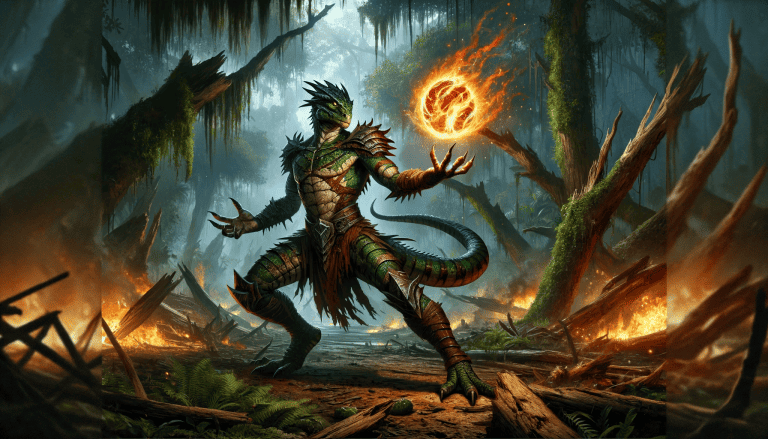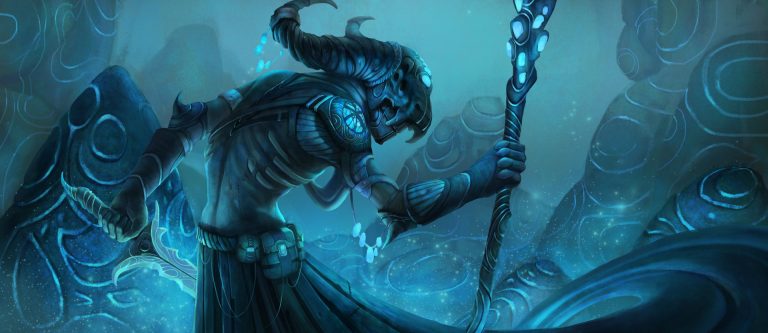How to Play Circle of the Moon Druid in 5e D&D
Circle of the Moon is arguably the most popular choice for Druids, especially those still fairly new to the game. However, popularity doesn’t mean that it’s an easy or basic Circle. It’s actually one of the most powerful and versatile Circles, giving your Druid a real edge.
If you’re the kind of Druid that likes to spend a lot of time in Wild Shape and digs the shapeshifting side of the Druid, this is the perfect Circle for you. Circle of the Moon focuses on the animalistic side of the class, giving you advantages that benefit you and your party on adventures.
Not entirely sure this is the subclass for you? Well, that’s why we have a detailed Druid subclass guide to help you understand more about how the Circle works and what it can offer.
How to Use This Guide
Throughout this guide, you will see a series of emojis—we use these to rank how useful a feature or ability is for your chosen class.
✅ — A critical feature that you absolutely need in order to play your class to the best of its ability. May also provide exclusive bonuses.
🆗 — A good feature that should definitely be considered.
⚠️ — A weaker feature that might only work with specific builds. Definitely largely circumstantial.
⛔ — A terrible feature that could be detrimental to your class that often weighs you down. Can also be a dump stat that is completely useless.
How Do You Choose a 5e Circle of the Moon Druid?
Wild Shape adds a good amount of hit points to your character, making it one of the most durable Circles to choose for your Druid – a massive selling point. Combined with Wild Shape’s versatility, it’s no surprise that the Circle of the Moon is so popular.
However, Wild Shape is a difficult ability to master. It’s not as simple as shifting into a creature. You need to think carefully about your choices and how effective they are in and out of combat. It takes a great deal of time and patience to master Wild Shape.
When done correctly, the Circle of the Moon is probably the most powerful option you have. There’s only one dump stat, and the rest of the abilities more than make up for it. All you need to do is put in the effort and play your cards right. Really, it’s an easy choice to make.
🌿 Not sure where to start? Check out our complete guide on how to play a Druid in 5e D&D

What Can a Circle of the Moon Druid Turn into?
As a shifting specialist, you can transform into pretty much any creature you like, and get a shortcut to CR 1 creatures. You still need to follow flight and swimming guidelines, but whatever you turn into will be more powerful than normal.
We have a full list of Druid creatures you can turn into, but some of the best choices are a Giant Hyena and a Giant Spider. The Hyena is a tank that can take a lot of damage and deal out just as much. The Spider? You can build webs to climb and crawl up walls.
Once you hit the 6th level, the creature CR available to you changes to ⅓ of your level – which means you have access to CR 2 beasts. This includes an Allosaurus and a Constrictor Snake, and both of these are incredible options if you want to take down enemies in style.
Some other excellent beast choices are a Dire Wolf, Tiger, Brown Bear, Giant Toad, Lion, and Giant Octopus. Give the Giant Boar a try. It’s pretty great if you want a powerful beast with badass tusks.
How to Play a Circle of the Moon Druid
Knowing how to play your class and subclass is a vital part of the game. So, how do you go about playing a Circle of the Moon Druid?
There are four crucial aspects to your Circle of the Moon build:
- High Wisdom and Dexterity modifiers
- Knowing the basics of your build
- Using animal shapes strategically but also in a way that relates to the story
- Choosing the right spells
Choosing a Race
The race you choose has a massive impact on Wisdom and Dexterity modifiers. Of course, Wisdom should be your highest stat (see our detailed Druid guide for more information), but Dexterity should come in close second.
Your skills and checks rely heavily on Wisdom, which is why it is so important. Dexterity is also beneficial for skill checks and complements your basic Armor Class nicely since Druids tend to lack the high AC classes benefit from.
While we take a more detailed look at the perfect Circle of the Moon build, later on, some of the races to consider are:
- Aarakocra
- Firbolg
- Kalashtar
- Loxodon
What you also need to consider is the racial abilities that come with each race. For example, while Humans are not the prime race for Druid, they should still be considered as a potential option because one of their racial traits is a bonus feat.
🌿 Looking for another subclass? Check out our guide to the Circle of Stars Druid
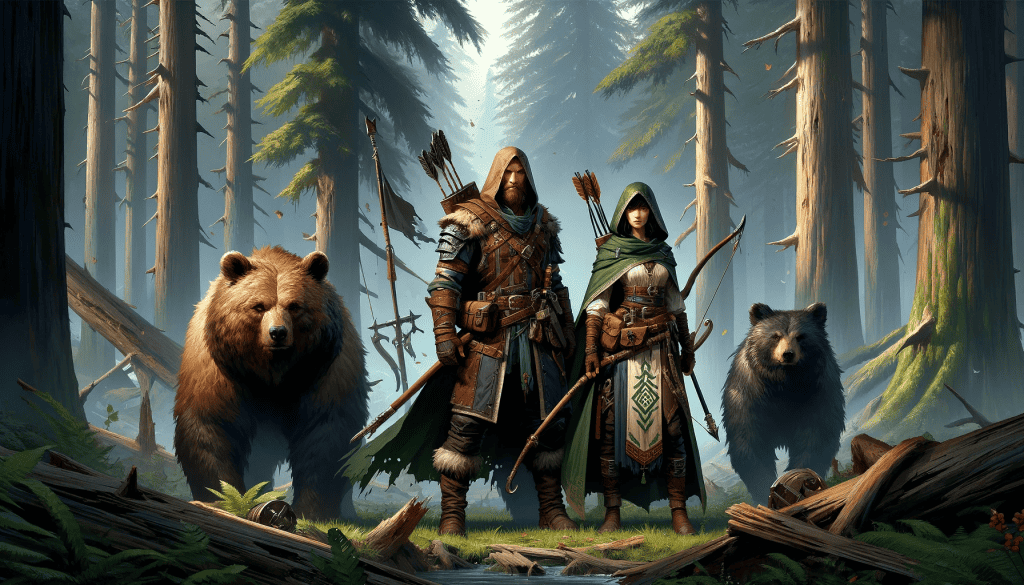
Knowing Your Class and Build
It’s essential to have a good understanding of the class you’re playing and the build you’re aiming for. If you want to learn more about Druids as a class, you can check out our introduction guide. In this section, we’ll go through some of the basics you need to consider.
You don’t need to worry about the weapons Druids use because they’re not the focal point of Circle of the Moon. You’ll have basic leather armor, but it comes off when you shapeshift, so it doesn’t matter a great deal in the end.
What you do need to do is focus on things like Concentration – which you need for casting and maintaining spells. A Druidic focus in tune with nature, like a staff or a wand, helps with this.
The ability to speak and understand the Druidic language will likely come in handy at several points during your adventures. It’s also a good idea to carry an herbalism kit for potions and healing – especially if you’re out of slots or your DM has put a cap on Goodberry.
Finally, you’re going to need to choose two proficient skills. This can be pretty tough as there are plenty of beneficial ones for Druids. But, you’re Circle of the Moon, so you should pick something like Perception and Survival.
Choosing Wild Shape Forms
You get Wild Shape at 2nd level, which is fantastic because it’s one of the best parts of being a Druid. You can shift into pretty much anything you like – which you can learn more about in our Druid Wild Shape guide – but it’s always a good idea to pick creatures that are both strategic and connected to the story.
While you start off with creatures that have no swimming or flying abilities, you gain them as you level up. Once you hit the 4th level, you gain swimming creatures, which boost your versatility and make gameplay more interesting. At the 8th level, the flying creatures come in for aerial attacks.
Spells and Cantrips
While we have an entire guide dedicated to the spells and cantrips you get as a Druid, let’s take a look at some of the best ones for a Circle of the Moon Druid – and ones that we can add to our ultimate build at the end of this guide.
We suggest going with Thorn Whip, Shape Water, and Guidance as definite choices for your cantrips. All of these are exceptionally useful and help you build a solid Druid.
For 1st level spells, Cure Wounds is a great choice for you and your party. Detect Magic, Goodberry, and Thunderwave are also exceptionally helpful. At 2nd level, Moonbeam and Barkskin are great choices to make alongside Darkvision, Pass Without a Trace, and Summon Beast.
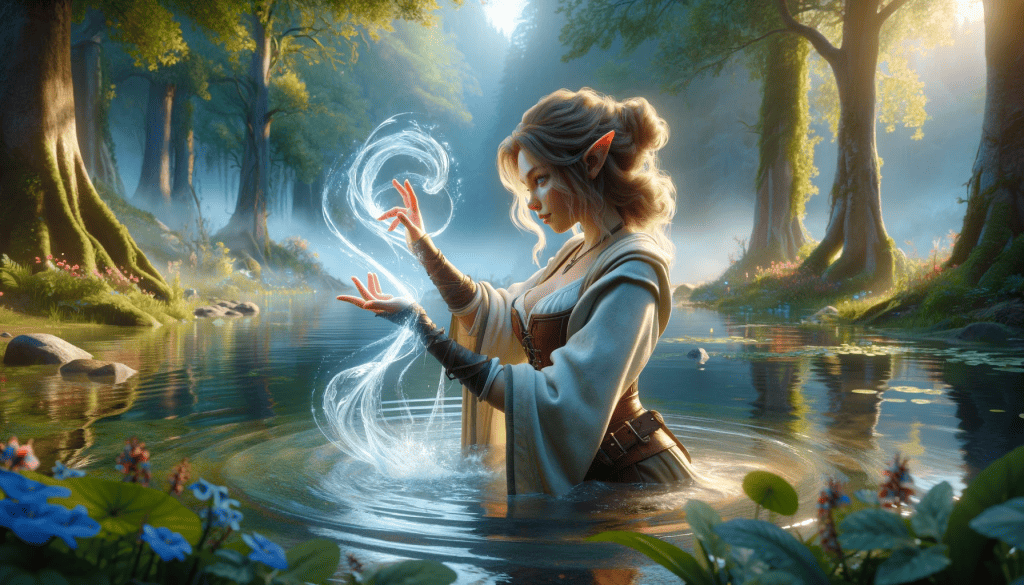
Circle of the Moon Features
The Circle of the Moon comes with a nice selection of features that make this subclass more versatile and add to its overall power. While the 14th-level ability can easily be considered a dump stat, the overwhelming excellence from the rest of this Circle’s offerings more than makes up for it.
✅ Combat Wild Shape (2nd Level)
An absolute gift at 2nd level, Combat Wild Shape is a bonus action, meaning you can move, attack, and shapeshift all in one turn. If you happen to get knocked out of Wild Shape, you can go straight back into it without worrying. Just specify what you shift into before you do it.
✅ Circle Forms (2nd Level)
Another exceptional 2nd level ability, you gain access to a whole selection of combat forms that are nothing but useful. It adds versatility and power to your capabilities as a Druid, and you can learn more about these particular forms in our Wild Shape guide.
✅ Primal Strike (6th Level)
If you’re ever left wondering what makes this Circle so effective, it’s this trait. Accessed at the 6th level, your enemies will feel the wrath of your claws as you rip and slash your way through their ranks. It’s especially useful when you come across enemies resistant to non-magical weapons.
✅ Elemental Wild Shape (10th Level)
Being able to harness the elements is incredible and gives you access to powerful forms while waiting to unlock those high CR creatures to shift into. It will take both of your Wild Shape uses, but if you have a little extra Dexterity, you’ll have no trouble zipping around and setting everything on fire. Flaming ball of death, anyone?
⛔ Thousand Forms (14th Level)
This spell is pretty good in some aspects, and it certainly allows for a great deal of shifting. However, Wild Shape manages to achieve everything that this spell does and more – and in a much better manner. Consider it a dump ability for Circle of the Moon. Although we can see why it exists, it doesn’t need to.
🌿 Want to play another subclass? Discover our Circle of the Land Druid guide
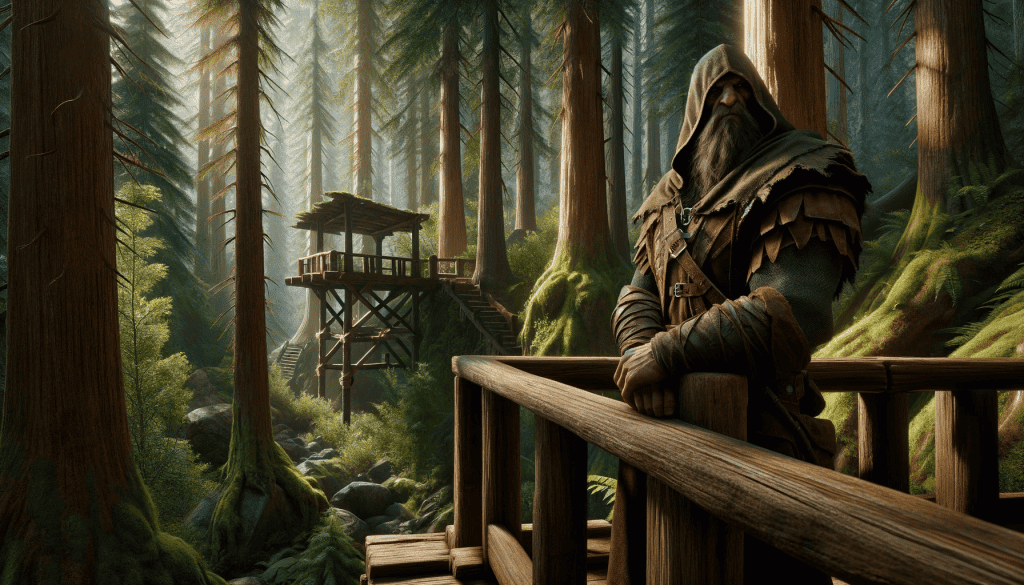
The Perfect Circle of the Moon Build
So, how do you get the perfect Circle of the Moon build? Well, we have our ideal build for this particular Circle below, so you have a good place to start.
Stats
⛔ Strength
Dump stat.
🆗 Dexterity
Gives you extra Armor Class when you are in Wild Shape.
🆗 Constitution
Not as useful for Circle of the Moon.
⚠️ Intelligence
Only good for knowledge skills.
✅ Wisdom
The most important stat.
⛔ Charisma
Dump stat.
Races
✅ Aarakocra
offers an ability score increase as well as flight.
✅ Firbolg
Wisdom increase and innate spellcasting abilities.
✅ Kalashtar
Wisdom increase and natural telepathy.
✅Loxodon
Ability score increase, including Constitution, and passive benefits.
Feats
- Metamagic Adept: This is ideal for any spellcaster, and gives Druids some great bonuses.
- Telepathic: For Circle of the Moon Druids, this solves the telepathy issues.
- Mobile: All of the effects apply during Wild Shape.
Skills
- Perception
- Survival
Spells
Cantrips:
Thornwhip
The damage here is acceptable, but what really makes this cantrip special is the pull effect. It gives you a nice ten feet of space, which is more than enough to throw enemies off walls, grapple something, or pull allies to safety.
Shape Water
This cantrip is versatile and powerful. Build bridges from ice, drop a frozen block on an enemy, or break a lock using the expansion of ice. It gives you a solution to so many problems, which is why this cantrip is an absolute MUST for any Druid.
Guidance
This is something you should constantly cast on your allies unless you’re concentrating on something with a long duration between fights. It really helps to boost your allies’ skill checks, helping the whole party be at their best.
1st Level:
Cure Wounds
It offers more healing than Healing Word, but it also takes up an action so you should only use it in emergency situations.
Detect Magic
A simple ‘does what it says on the tin’ spellーdetects magic in the area. Every party needs one person who has it.
Goodberry
It offers more healing per spell slot than Cure Wounds, and there’s no set limit on the berries, so you can conjure a giant bag of healing berries to munch on in combat.
Entangle
An area of control spell that works beautifully at every level. The fact that it’s strength-based means that even high-level enemies don’t stand a chance against being restrained. However, it does require Concentration to maintain.
Thunderwave
One of the few options you have for pushing your enemies away. Thunderwave offers some good damage output while you’re in combat, and you can always push enemies into an area of control effect.

2nd Level:
Barkskin
It’s a fantastic option for your Armor Class if you manage to maintain Concentration.
Darkvision
Allowing you to see in the darkness is a huge tactical advantage. And as an added bonus, it lasts for eight hours.
Moonbeam
An ongoing spell, it deals damage to one creature once per turn. They do have the opportunity to roll a Constitution save in order to reduce the damage. Moonbeam also deals radiant damage, which is a rare treat for Druids.
Pass Without Trace
This spell gives you a +10 bonus, which is incredible. It’s not going to give you invisibility, and you’re still going to need to find cover, but this bonus is enough for you to take down a plated fighter.
Summon Beast
This spell lasts for an hour and is definitely one of the best on the list. It provides highly effective beasts that give you plenty of mileage. Run Pack Tactics alongside them, and you have consistent and highly reliable damage.
Wild Shape Forms
You’ll have access to a whole range of Wild Shape forms, and for Circle of the Moon Druids there aren’t any specific ones that you should go for. It’s all about being strategic and ensuring you remain immersed in the setting and world that your DM has created.
For 2nd level, some of the best forms are:
- Wolf
- Giant Frog
- Panther
- Giant Badger
For the 4th and 8th levels, once you have unlocked swimming and flying, you should try:
- Crocodile
- Reef Shark
- Giant Crab
- Giant Eagle
Equipment
Druids tend to have a low armor class, even with the benefit of your Dexterity modifier and the leather armor. Since Druids are able to wear medium armor, you can benefit from some snazzy studded leather if you wish.
However, armor is not a massive deal for Circle of the Moon Druids. When you swap into Wild Shape, you get a nice boost to your Hit Points and Armor Class. But while you’re in your normal form, it’s always a good idea to be protected from surprise hits.
As for weapons, the Druid allowance is fairly basic. Again, Wild Shape tends to deal with your attacks in the Circle of the Moon, but you can choose from the following as an example:
- Sling
- Staff
- Shortbow
- Scimitar
To Sum It Up
We hope this guide to the 5e Circle of the Moon helps you get a better idea of what the Circle offers and how to utilize it in the game. As one of the most powerful and versatile Circles out there, we’d love to hear how you get on with it. What do you love? What do you hate? Join in with the discussion and leave us a comment below.





